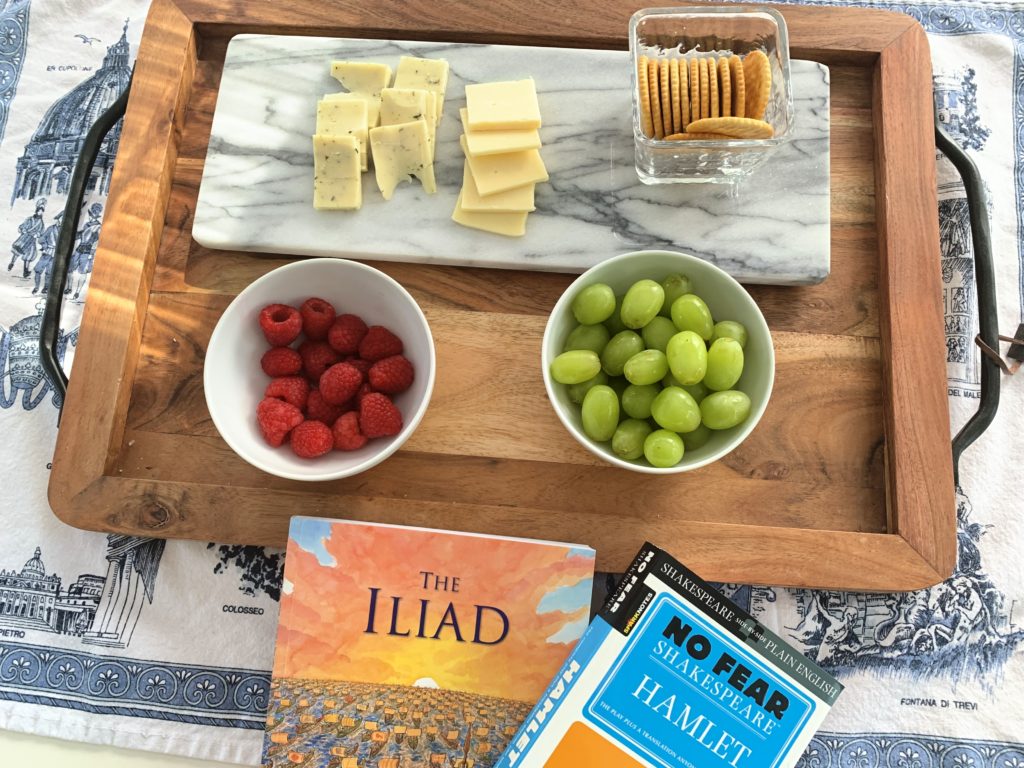I frequently see homeschoolers new to Brave Writer ask if The Writer’s Jungle is necessary. Valid question! I wondered it myself in the beginning. Of course, there’s no one right answer for every situation or family, but I am surprised by the ‘no’ answers.
As I see it from the end of this high school writing road, my answer is yes.
Learning to be a writing coach without The Writer’s Jungle would be like learning to drive with my hands tied behind my back. I could use my teeth to steer the car (and look ridiculous) but why make it harder on myself? Or embarrassing. Not to mention the number of wrecks I’d have because I can’t both steer and check my blind spot, turn on my signal, or honk at other drivers. (I live in Atlanta. Honking your horn is an Olympic sport.)
Man, it would be a hot mess of wrecks.
I don’t want my kid’s experience with writing to be a hot mess of mom wrecks.
So why does a homeschool parent need The Writer’s Jungle?
Why do we need GPS to drive in an unknown city? Maps! We need maps to get to where we’re going. The Writer’s Jungle (TWJ) is your map.
And TWJ is not necessarily about what your child should write.
Write a descriptive paragraph about a bird with a topic sentence, three supporting details and a concluding sentence.
You won’t find anything like that in this guide, thank god. (Though you certainly will find writing project ideas. You just won’t find ones that fill you with dread.)
It’s not a top-down approach where the adult has the power to assign and the child must comply. Instead, it’s what you, the coach, need to do to understand and partner with your child as they grow into a writer, into a legitimate author of their own voice.
Look, we know learning is based on the relationship between the teacher and the learner. Not the curriculum, not the grades or standards or scope and sequence. It’s the relationship.
TWJ helps you discover how to coach writing based on relationship rather than demands and coercion. It leads you through how to build that relationship and teach writing at the same time. It gives you practical writing exercises to try out. It’s the why and the how.
Now, you know we Type A homeschoolers get a thrill from the how. (I feel the goosebumps already!)
As a Type A myself, I’ve got your back on the practical application. I’m breaking down how the TWJ is a value tool in your writing toolbox, even in the high school years. Let’s make this a series of posts because gosh knows I’ve become habituated to internet reading myself. Who reads long blog posts? Multiple sentence paragraphs? No one. If it’s not a listicle, does anyone even read it anymore? I DON’T KNOW, CAN SOMEONE PLEASE EXPLAIN INTERNET READERS TO ME IN A FIVE POINT LIST?! IS THIS PARAGRAPH ALREADY TOO LONG?! WAIT, I JUST THOUGHT OF SOMETHING COMPLETELY UNRELATED TO LOOK UP ON PINTEREST!
Close that Pinterest tab. Let’s get to how TWJ is valuable. IN LIST FORM.
THE PREFACE
Yep, the preface, you guys. There is enough meat in the preface itself that this listicle is only about the preface.
1. The Element of Surprise – the secret weapon (pages xiii-xvii)
“The best writers surprise us over and over again.” (The Writer’s Jungle, pg xiv)
The preface delves into a lesser-known literary element: the element of surprise. What it is, how it shows up…TWJ details it in bolded sentences. You can’t miss it.
How I put the idea into practice:
- I created a cheat sheet on the element of surprise with a bullet list of notes we can refer to without needing to pull out TWJ each time. Pop it in their writer’s notebook under a new “author’s craft” section or in the revision tab. We can also pull it out as we examine Golden Lines from literature too. Did they author use an element of surprise? Which one?
- We look for it in other people’s writing and record the ones we like in our literature journal.
- We practice it in bits and pieces. Low stakes, no pressure practice. We play around with it, maybe with our Metaphor Dice game. Maybe after a keen observation exercise, we’ll cut up the words and do a snip and pin version of surprise.
- We’ll try incorporating one aspect into a writing project.
2. Meaningful Conversations (pages xvii-xx)
“Meaningful conversations are the most critical component to a writing program.” (TWJ xix)
You’re not having them or know why it’s related to writing? This will get you started. It gives you fifteen suggestions to try.
3. Freewrite & Revision (pages xx-xxi)
Right away you’re given a regularly scheduled writing exercise to try out. And also the GOLDEN RULE for revision feedback…
“Find at least one good thing to say about that freewrite.” (TWJ xx)
Later chapters go into more detail on giving that feedback (my most referred to chapter in TWJ), but if you follow that one line right there, it will make a tremendous difference. It’s a vulnerable moment for a writer to see/hear what someone else has to say about their writing. It’s hard! Having resources on giving positive feedback helps you create a safe environment for that vulnerability.
4. Snip and Pin Revision ( pages xxi-xxiii)
Yes, this is still for high schoolers.
One piece of advice I would add is to start snip and pin with someone else’s writing. Do this exercise with someone else’s writing before using it on theirs. It will take the pressure (and potential defensiveness) out of the situation. There is nothing at stake because it’s not their work.
Compare your child’s “pinned” arrangement to the original and discuss why your child made the decisions they made, why the original author may have made the decisions he/she made. Like that.
You can break this down by cutting up a paragraph into sentences or cutting an essay into paragraphs and arrange by paragraph instead. (A good way to discuss emphatic order.)
After grasping the point of the exercise, change it up and do a horrible revision with a new paragraph/essay to snip and pin. How terrible can we make this piece of writing? Then we can examine why a reader would struggle to follow it. (It jumps around too much. You’re talking about this but randomly insert that, this shouldn’t come first, etc., etc.)
5. Coaching a reluctant writer (pages xxiii-xxv)
Whew boy, do I have some experience working with a reluctant writer. This section gives you a solid starting place if you’re faced with that homeschool dilemma.
“The goal in brave writing isn’t perfection but courage.” (TWJ xxiii)
6. Jabberwocky! and Scrounge Poetry (xxv-xxix)
Two more exercises to try out. Your high schooler may feel Jabberwocky is too young for them (mileage varies), but Scrounge Poetry should work well. Anything works well for teenagers if you add food.

Learning to write shouldn’t be a hot mess of wrecks. We know through research that learning is actually based more on relationship than a curriculum plan. The Writer’s Jungle helps you bridge the relationship and the writing plan.
Giving yourself (YOU, not the kids) the right tools makes this challenging homeschooling job that much easier. You deserve it.
*This post is not sponsored by Brave Writer. I purchased The Writer’s Jungle with my own moola almost four years ago after a handful of frustrating years and crying spells using other writing curriculum. I haven’t cried over teaching writing since.



